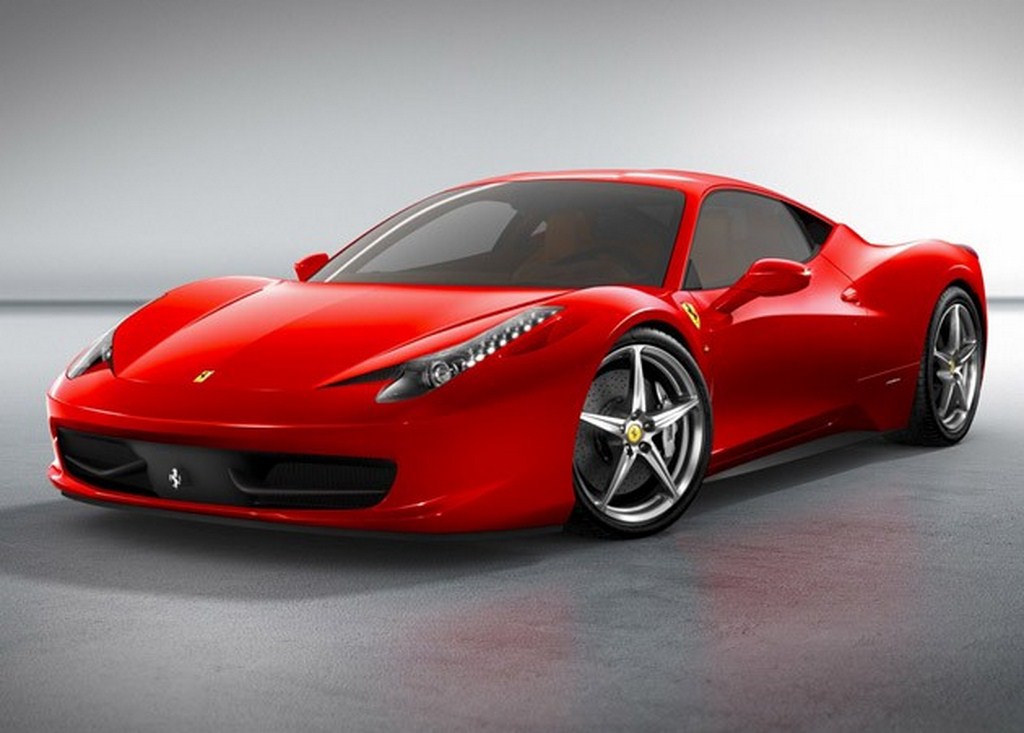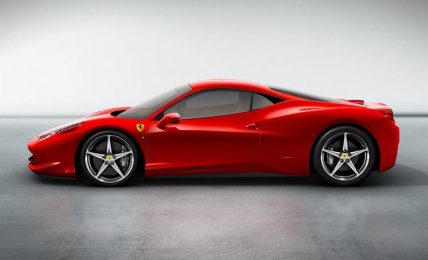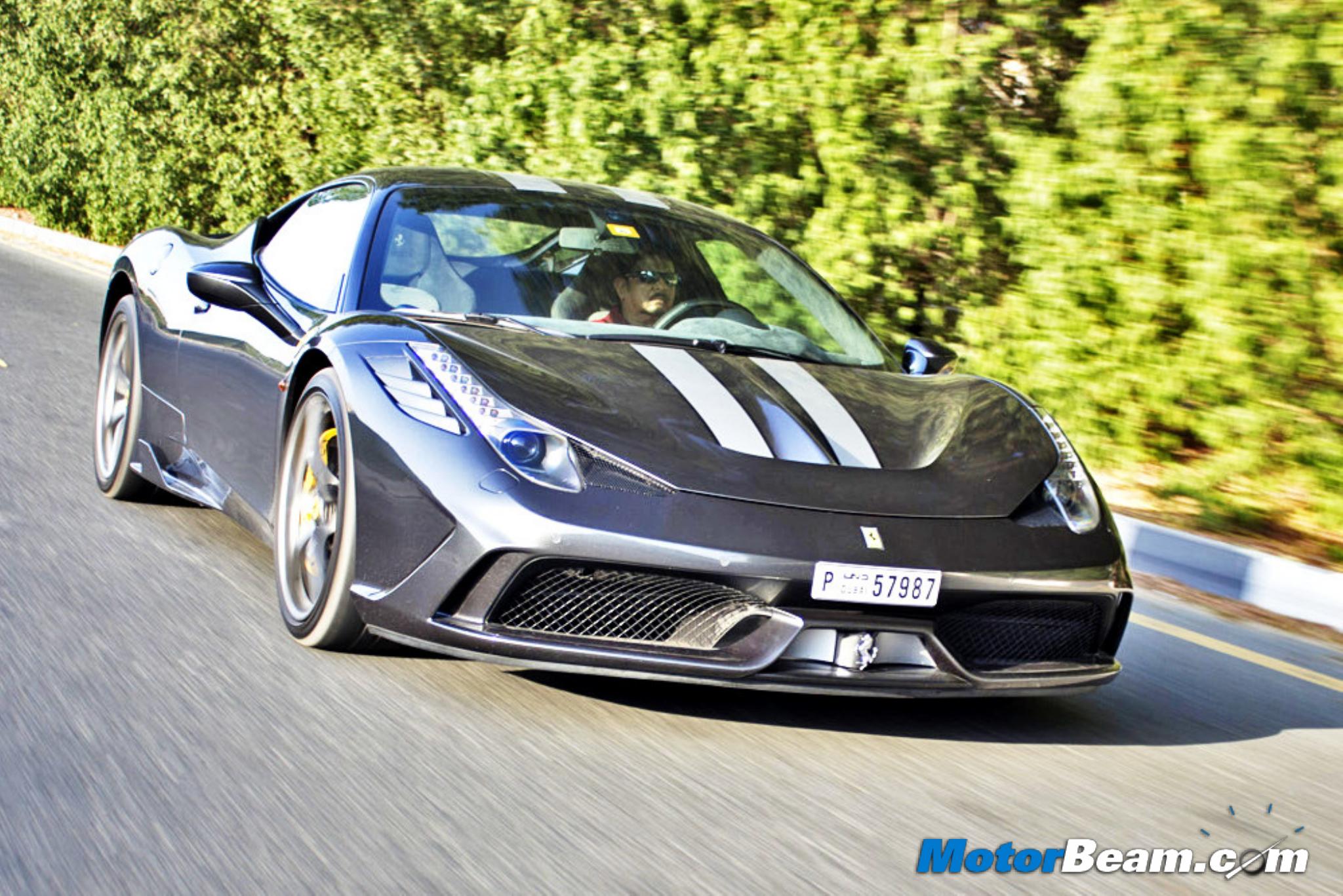[singlepic id=10329 w=540 h=375 float=center]
Author: Chandan B Mallik; Photography: Author and Nabeel Ferzan
Thanks to Ferrari’s multiple award-winning all-new 2012 458 Italia, the seventh in the series, skeptics will have to wait for a long time to hear before a supercar’s obituary has been written. Meanwhile, we at MotorBeam discover how close one can get to eternal automotive bliss.
[singlepic id=10325 w=540 h=375 float=center]
A new Berlinetta from Ferrari has arrived in the world of supercars at a time when critics of the supercar lobby have been actively predicting the segment’s eventual demise. Well, everyone has an opinion to share, but despite what’s happening in the world of fast motoring, the obituary isn’t happening at Ferrari, while others resort to alternative solutions such as downsizing displacement and cylinders, direct injection or part hybridization etc.
When we got an exclusive on-off invite to test the car in UAE for a day, we must admit in our profession, there are these rare moments in our tranquility that’s a welcome distraction. This is where we can re-ignite the fact that it’s also fun to adorn the role of a 100% petrol head. Because of the adulation, devotion, and unrelenting attention due this new model, also the winner of the 2011 performance car title, we made sure that we didn’t fall into the trap of one preconceived notion or another about Ferrari and take things for granted.
[singlepic id=10320 w=540 h=375 float=center]
But Ferrari likes to keep things clear and pure. While, the 458 Italia is the spriritual replacement for the aging F430, Ferrari has ensured that the new car continues with the established principles which are responsible for the venerable status of the F430. This means the car had to be made using an aluminium space-frame and mid mounted naturally aspirated V8 engine powering the rear wheels.
And that’s where the similarity ends as much of the Ferrari 458 is entirely new. But, there’s one fact that Ferrari cannot be discounted for – its technology driven products, innovation and design. While the Italia uses the same modular format for the chassis as the California’s, Pininfarina design has ensured that it is distinctive in its own right. In fact, the lines of this low slung car are not only pleasing to the eye but they also communicate evidence of the complete departure from the past in its compact aerodynamically inspired profile while underscoring an element of simplicity, efficiency and lightness in the overall package. As it evolves, it is only a millimetre lower than its predecessor, but 14mm wider and 15mm longer, with a wheelbase stretched 50mm with overhangs shorter to match. The front track has been pushed 3mm wider, although the rear is actually narrower. The car’s front features a single opening for the front grille and side air intakes and aerodynamic cues and detailing of this car which can reach speeds up to 325 kms are obvious to a keen eye. The car’s fluid shape, new flat underbody, specially designed mall aeroelastic winglets on the nose all contribute in generating downforce as much as 140 kgs at speeds of 200 kmph and above.
[singlepic id=10331 w=540 h=375 float=center]
The Italia’s interiors talk about the next level – in terms of supercar design with pure driver focused elements such as the leather bound two tone interior, new wraparound dashboard, three dimensional HVAC vents, extra chassis controls, starter button, turn signals and more on the steering wheel (believed to be recommended by Michael Schumacher for that closest to F1 track car feel), low slung sports seats among others. Similar to the outgoing F430, there are no gear shifters, but electronically operated buttons instead neatly settled at the base of the central console. Instrumentation is a mix of analogue and digital, where the digital part of the display can also be programmed to offer all sorts of information needed for a typical track day outing. As before, the paddle shifter are mounted to the steering column, whereas most rival models such as the new McLaren MP12 C has them on the steering wheel. Ferrari’s view point is that you should not change gears while the wheel is turned. Plus, by moving all secondary controls to the steering wheel, there is no accidental activation of the wipers or turn signals. Our only niggle with this is that you need to cancel said turn signals after a lane change, as they lack a three-blink feature so it has to be manually canceled at times.
[singlepic id=10335 w=540 h=375 float=center]
The car’s 4,499cc normally-aspirated V8 is the first Ferrari direct injection engine to be mid-rear mounted. It has a very low piston compression height typical of racing engines which contributed to achieving its compression ratio of 12.5:1. Equipped with the traditional flat-plane crankshaft [introduced in the F430 with great success], the engine delivers 562hp at 9,000 rpm and which also translates to incredible power output of 125 hp per litre. This engine has also received top marks from Wards Engine awards [equivalent of engine Oscars] and offers maximum torque of 540 Nm at 6,000 RPM, over 80% of which is available from 3,250 rpm. The seven-speed sequential gearbox in this car traces its heritage to the track and the e-diff is now incorporated within the transmission housing to reduce dimensions and weight. The e-diff, F1-Trac traction control and ABS are now controlled by one ECU. Altered gearing suits the extra power and the car’s character, while gear actuation is quicker. Even the asymmetric tyres have been specially designed.
Although the 458 is based on the same chassis of the California, it uses a multi-link rear suspension that has been designed for this car specifically with different suspension bushings plus new software and hardware for the Magnetorheological magnetic suspension (SCM2) for more rapid response. This is to ensure that there’s greater roll stiffness and greater lateral and longitudinal integrity. Stopping power has also improved, with 100km/h to zero in 32.5m, thanks to carbon ceramic brakes and new high-performance ABS.
[singlepic id=10321 w=540 h=375 float=center]
Driving impressions – Once you are inside the car, there’s an immediate sense of déjà vu. Part of this I think is to do with the driving position where you not only sit quite low but almost at the outer edge of the car which heightens the sensation of its width. It takes a little while to get accustomed to the haphazardly placed controls on the steering wheel and during the first few kilometers of driving the car in Dubai we were almost disappointed at how easy this car is to drive. It initially sounds a little flat, and feels almost too sensible. But when you decide to go a bit faster the canvas can change dramatically.
I’ve driven the F430 before and its exhaust note sounded like an overgrown sports motorcycle, whereas the 458 sings a more melodious and more complex tune. The bored out engine sounds delicious, utterly intoxicating and encourages you to use every last one of the 9,000 revs that are on tap before you finger-flick the superfast paddle shifter back and engage gears in less than a blink of an eye. One thing I noted in particular is that even at docile speeds of say 100 kmph, the engine is ticking at around 3,000 RPM and constantly reminding me of the fact that there’s up to 15 per cent more torque at low to medium revs than any 430 variant had, and 80 per cent of it available from 3,250 to 9,000 RPM. The second thing that we experienced with the seven-speed transmission is that even at very slow city cruising speeds as low as 73 kmph, the top gear still holds and it’s when you abruptly push the throttle that the gears downshift to third without the engine screaming unnecessarily – something which the Maseratis tend to do. What is truly extraordinary is the amount of torque available while still maintaining high levels of power at low revs, thanks to the record 120 Nm/litre specific torque ratio.
[singlepic id=10332 w=540 h=375 float=center]
It’s great fun to be able to shift through the gears super quick. The engine responds with blips and opening of the exhaust baffle plates release that extra power. Even on technically challenging roads one really doesn’t miss the manual transmission at all, reveling instead in the way you can drive the car with both feet and delighting in the instant shifts in both road modes. Actually, one of the nice things about this car is its dual personality. Although it has track genes built in, one would have thought that a racetrack is needed to appreciate the car. While that’s true to some extent but even in normal driving situations, our drive across the UAE’s roads we could manouevre it like a normal sports car by tapping the wheel-mounted button (choosing the appropriate mode) to soften damper response and leaving other job for the Manettino (controls) to go on with.
[singlepic id=10326 w=540 h=375 float=center]
Although we didn’t go in for the extreme two-track modes (as it could compromise with safety on public roads), if one wanted to experience some G-force thrust, we are happy to note there’s plenty of it, courtesy of extra generous torque on tap. Even in the normal mode, the thrust available is pretty compelling by any measure and car’s road manners are impeccable and quite consistent with its engine note which is frantic [as even idles at higher revs]. While most modern cars are opting more and more electric power steering, it’s still nice to have a bit of old school with the hydraulic set-up. The weight of the steering is marginally felt in low speeds and progressively changes as speeds pick up and offers incredible feedback to the inputs from the driver. The steering is hyper-responsive, intuitive, reacting to mere twitches and so is the accelerator pedal, which spikes the revs and illuminates a set of bright red LEDs atop the steering wheel as you approach the 9,000 RPM redline. No supercar is worth its salt if it hasn’t been given the hairpin test. We deliberately chose a route with plenty of those with both on and off cambers thrown in. Whatever was thrown in, the F458 takes it naturally and turns in as eagerly as a kid choosing candy!
[singlepic id=10323 w=540 h=375 float=center]
Verdict – If someone was thinking about writing an obituary about supercars, well right now it’s not happening, at least at Ferrari. No amount of fancy words can ever describe the 458 Italia in its totality. Simply put, it’s sensational. When Ferrari announced the 458 Italia as the successor to the F430 model it promised a giant leap forward in design, technology and environmental efficiency. A two-seat berlinetta, Ferrari calls its 458 Italia “a completely new car from every point of view: engine, design, aerodynamics, handling, instrumentation and ergonomics.” Although, the F430 was a breakthrough in many respects, the 458 Italia in our opinion represent a further evolution in engineering and design elements packaged with class-leading refinements. We couldn’t agree more after spending some quality time with it. The 458 Italia is soulful and pure and direct, something you wear as an extension of your body, mind and eyes.




